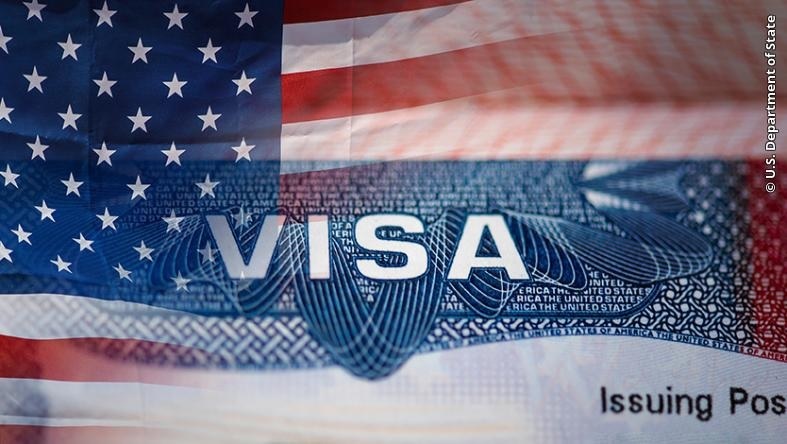New beneficiary-centric approach likely to cut number of H-1B registrations by half

As the H-1B registration period begins March 6, new process aims to reduce fraud and give equal opportunity to beneficiaries
The registration period for the FY 2025 H-1B cap will open on March 6, 2024, and close on March 22, 2024. Based on some estimates close to 350,000 unique beneficiaries are expected to seek H-1B cap positions this year, which is less than half of the registrations the United States Citizenship and Immigration Services (USCIS) received last year.
This reduction is attributed to USCIS adopting a beneficiary-centric approach this year to mitigate the risk of fraud in the registration process. Out of the 758,994 registrations USCIS received in FY 2024, 408,891 turned out to be duplicate registrations.
Under the previous process, H-1B selection (commonly referred to as the “lottery”) was conducted from all registrations submitted by employers, giving beneficiaries for whom multiple employers submitted registrations a higher chance of selection.
READ: Everything you need to know about H-1B visa program (April 26,
Under the new process, USCIS will select registrations by unique beneficiary rather than employer registrations. Employers must register each beneficiary using their valid passport or travel document number. Even if multiple employers submit registrations for the same beneficiary, the beneficiary will only be included in the “lottery” only once using their passport or travel document number, ensuring all beneficiaries have an equal chance in the selection process.
USCIS has clarified that if a beneficiary is selected, all employers who submitted valid registrations for that particular beneficiary will be eligible to file a formal H-1B petition. Thus, there can be multiple H-1B petitions for the same beneficiary.
READ: H-1B initial electronic registration selection for FY 2023 completed (March 30, 2022)
This will certainly benefit selected beneficiaries with multiple employer registrations. They may choose the “best offer” or “best employer” among those who registered for them, thereby increasing their bargaining power.
This advantage is particularly significant for beneficiaries who face offer withdrawals after selection due to unexpected circumstances (such as layoffs), as they can turn to other employers who registered for them. (Some FY2024 H-1B selectees experienced offer withdrawals due to layoffs, despite working for their employers for 2-3 years under F-1 OPT.)
However, allowing H-1B selectees to choose their employer poses challenges for employers, as it raises the possibility of a selected employee, for whom the employer invested time and money in registration, opting to join another employer. This uncertainty can be financially burdensome for some employers, especially considering the impending increase in H-1B filing fees effective April 1.
Under a final rule released on January 30, employers hiring high-skilled foreign nationals will face significant fee increases for various visa petitions this year. The USCIS filing fee for beneficiaries on H-1B petitions will rise by 70 percent, while those on L-1 petitions will see a 201 percent increase, and individuals on O-1 petitions will face a 129 percent increase.
READ: Indians bagged 300,000 H-1B visas in FY 2021, 74% of total (April 18, 2022)
Specifically, the USCIS filing fee for H-1B petitions will increase from $460 to $780, for L-1 petitions from $460 to $1,385, and for O-1 petitions from $460 to $1,055. However, small employers with 25 or less full-time equivalent employees are exempt from this fee increase.
Under the final rule, employers will also have to pay a new fee called Asylum Program Fee (to cover some of the costs relating to the asylum program) whenever they file a Form I-129 petition for a nonimmigrant worker (H, L, O, etc.,). The new Asylum Program Fee is $600 for employers with 26 or more full-time equivalent employees and $300 for employers with 25 or less full-time equivalent employees.
The USCIS website provides a complete list of the new fees.
(Please note that, at the moment, there no increase in the American Competitiveness and Workforce Improvement Act of 1998 (ACWIA) fees and the H-1B Fraud Prevention fees.)
It’s advisable for employers to ensure that beneficiaries they register are genuinely interested in joining them upon selection, rather than simultaneously pursuing multiple employers, which is legally permissible.
USCIS emphasizes that beneficiaries must possess a valid, unexpired passport or travel document at the time of registration.
Additionally, the new organizational accounts for employers launched by USCIS will allow employers to file H-1B cap registration for sub entities using the same organizational account.
Editor’s note: This post was updated on March 6, 2024.
(Johnson Myalil is an immigration attorney at High-Tech Immigration Law Group in Reston, Virginia.)
